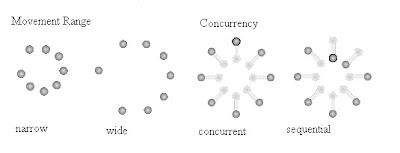| Wen-Huang Cheng | National Taiwan University, Taipei, Taiwan Roc |
| David Gotz | IBM T.J. Watson Research Center, Hawthorne, NY, USA |
Paper (pdf):
http://portal.acm.org/citation.cfm?id=1502650.1502668&coll=ACM&dl=ACM&type=series&idx=SERIES823&part=series&WantType=Proceedings&title=IUI&CFID=81639924&CFTOKEN=12013848
Summary:
This paper explores the authors program InsightFinder, a web tool that aides in connection discovery during sensemaking tasks, as well as provides details to the algorithm, interface, and user study behind it.
The program they developed is called The InsightFinder and is described as 'a smart web-browsing system that assists in connection discovery during sensemaking tasks by providing context-based page unit recommendations.' The sensemaking that they refer to is the process a user faces after they have selected a website such as from a browser query and they are scanning through the website to find the information that they were looking for and then connecting that information to other relevant data from other websites. One of the examples that they gave was someone who was relocating to a new city. Some of the things they might research is an apartment complex within their price range, relative location to a day care for their children, and also proximity to their place of work. Rather than have to search all of these out individually and accumulate a series of notes that illustrate all the different possible solutions the program InsightFinder would do this for you, linking these different websites together.
Below are the properties that a tool of this nature should have:
- Site Independence: A sensemaking tool must be independent of any specific site or content provider to allow cross-site connection discovery.
- Note-Taking Functionality: A sensemaking tool should allow for the collection of information fragments into a task-specific workspace to help users organize their findings across multiple sessions and sites.
- Assistance in Connection Discovery: Most critically, a sensemaking tool should assist the user in performing the difficult process of uncovering connections between their notes and what is currently being explored in their browser.
The insight loop is
triggered directly through the InsightFinder interface,
which provides tools for users to record or organize their
notes. As the user’s notes evolve, the InsightFinder
maintains a context model which represents the user’s captured data. The exploration loop occurs while users
interact with the normal browser interface. As users
navigate the web, the InsightFinder performs a series of
steps each time a new page is visited. At the conclusion
of both loops, the InsightFinder provides a ranked list
of recommended web page fragments that are most relevant
to the content in the user’s notes. To provide this functionality, the architecture includes modules for interface management, content extraction, context model
management, page segmentation, and relevance computation.
Below is a screen shot of InsightFinder, followed by another illustrating the ability to take notes.
 Figure 2. A screenshot of the InsightFinder system.
Figure 2. A screenshot of the InsightFinder system. Figure 3. Users can record notes by dragging content
Figure 3. Users can record notes by dragging contentfragments (links, images, text, or entire pages) from the
browser to folders in the InsightFinder.
The last part of the paper went into detail describing the user study they performed and the results. Their program ran as a sidebar on mozilla firefox using XUL for the interface and java/javascript for the computational components. Overall their program was proved to work as it was suppose to and it did indeed improve sensemaking tasks by reducing the amount of time required to perform them, on average a reduction of 30 seconds. In their possible future work they mentioned extending the granularity of their node-weighing as well as improving the note taking capabilities.
Discussion:
The InsightFinder that the authors developed was a good novel program. I hadn't thought much of tools aiding in finding connections between websites based on notes and so forth. I have only ever used a search engine and trial and error to find more specifically what I was looking for. I think a program like this would be a good extension for web-browsers. It may not be used on a day-to-day basis but when doing things such as research I can see how this would come in handy, scanning an accumulation of notes to suggest/recommend websites to view.



















